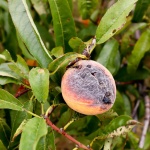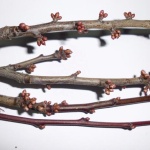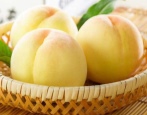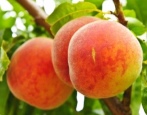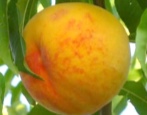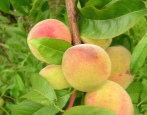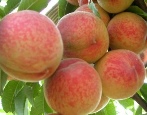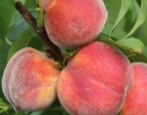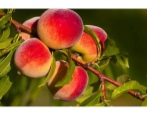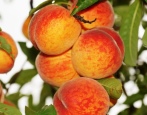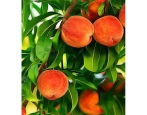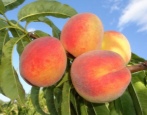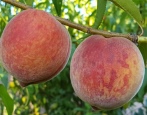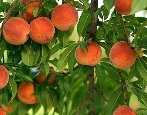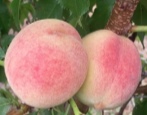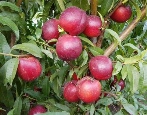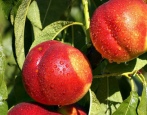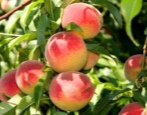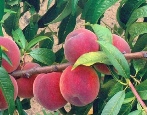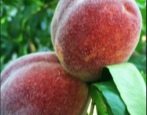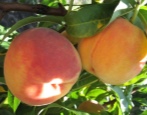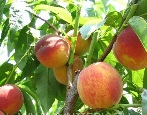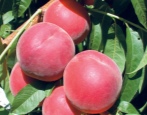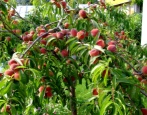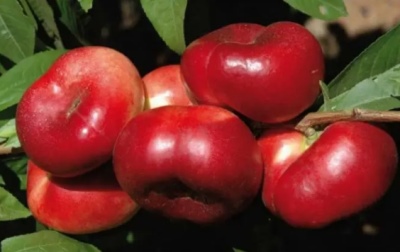
- Authors: Italy
- Name synonyms: Donut
- Growth type: medium-sized
- Ripening period: average
- Appointment: for fresh consumption
- Yield: high
- Transportability: high
- Early maturity: from 2 years after planting
- Bone size: small
- Separability of the bone from the pulp: good
Donat is a fig nectarine that came to Russia from Italy. Here the fruit quickly took root, however, judging by the reviews of gardeners, high-quality seedlings are still difficult to get. From this article, the reader will learn about the features of the presented variety.
Description of the variety
Donat is a medium-sized plant, the height of the tree reaches 3 m; the crown is thick and spreading; lanceolate leaves, dark green above, gray below; the petals of the flowers are light pink, resembling a rosehip.
Fruit characteristics
The fruits are medium in size, about 120 mm, burgundy in color, their shape can be flat or flattened, have one groove, the weight can exceed 120 g. The fruit is velvety to the touch, not fleecy, and its main advantage is excellent transportability, which allows growing the variety. Donate for industrial purposes.
Taste qualities
The pulp of this nectarine is juicy, fibrous, light cream in color, and the taste is very sweet, without sourness. The pulp contains a lot of useful substances and is easily separated from the stone, which, by the way, is quite small. In addition, the Donat nectarine has a very pleasant aroma.
Another feature of the fig peach is that when consumed, its taste always remains equally saturated in all parts of the pulp, unlike other varieties in which the taste becomes less pleasant in the part next to the stone. Donat variety is used for fresh consumption.
Ripening and fruiting
The presented variety begins to bear fruit already in the second year and belongs to varieties with an average ripening period: you can eat the first fruits in late July - early August.
Yield
Donat belongs to high-yielding varieties and on average yields up to 50 kg of fruits per tree at the age of 4-5 years.
Growing and care
Pay special attention to the choice of soil for planting - this culture is quite picky about the type of soil. Follow simple guidelines.
- If you have a choice, then give preference to black soil and loam for planting a tree.
- The site should be well lit by the sun. It is best to position the seedling on the south side of the garden so that the plant is protected from the wind.
- Make sure that the groundwater flow is at least three meters above ground level.
- Avoid ridges where melons, strawberries, nightshades used to grow. Such plots can be used for planting Donat nectarine only after four years.
Gardeners give some tips for feeding your crop:
- use urea and ammonium nitrate as fertilizer in spring;
- in the fall, potash-phosphorus compositions will be relevant;
- once every 2-3 years, add humus or manure for the autumn digging.
It is a moisture-loving plant that needs watering twice a month. At one time, 20-25 liters of cold settled water is used for one tree.
In the spring, sanitary pruning should be performed: this process consists in removing sick, damaged and frozen shoots. Don't forget about formative pruning: gardeners recommend keeping the tree cupped. Treat all cuts with garden pitch.
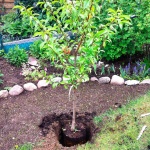
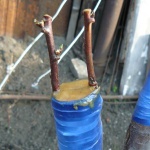
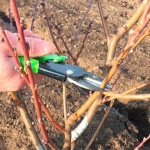
Frost resistance and the need for shelter
The Donat variety has a high level of winter hardiness, the tree perfectly tolerates return frosts. According to the observations of some gardeners, this nectarine feels comfortable in climates with rainy winters and hot dry summers.
Disease and pest resistance
The Donat variety boasts a high resistance to diseases and insects. However, according to the experience of some gardeners, it can be concluded that fruit rot can develop on the tree during the rainy period, in addition, the fruit can crack. If this problem arises, then the spoiled fruits must be collected and destroyed, and in the spring the bush must be treated with Topsin or Teldor fungicides.
